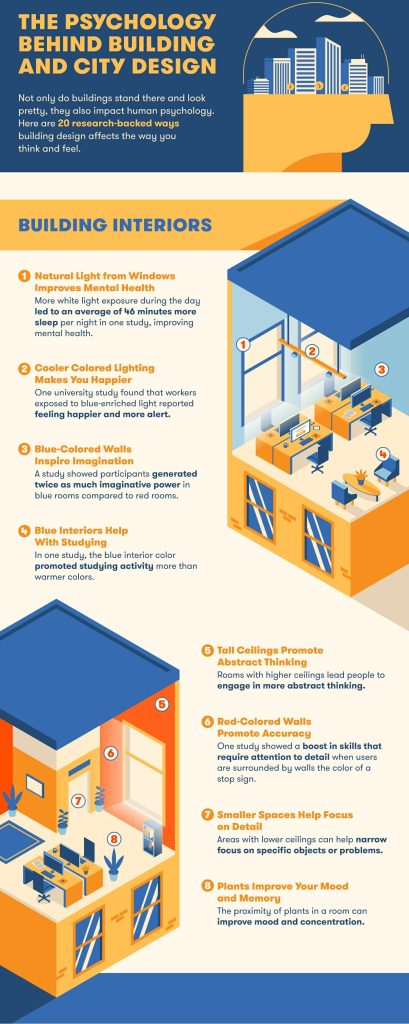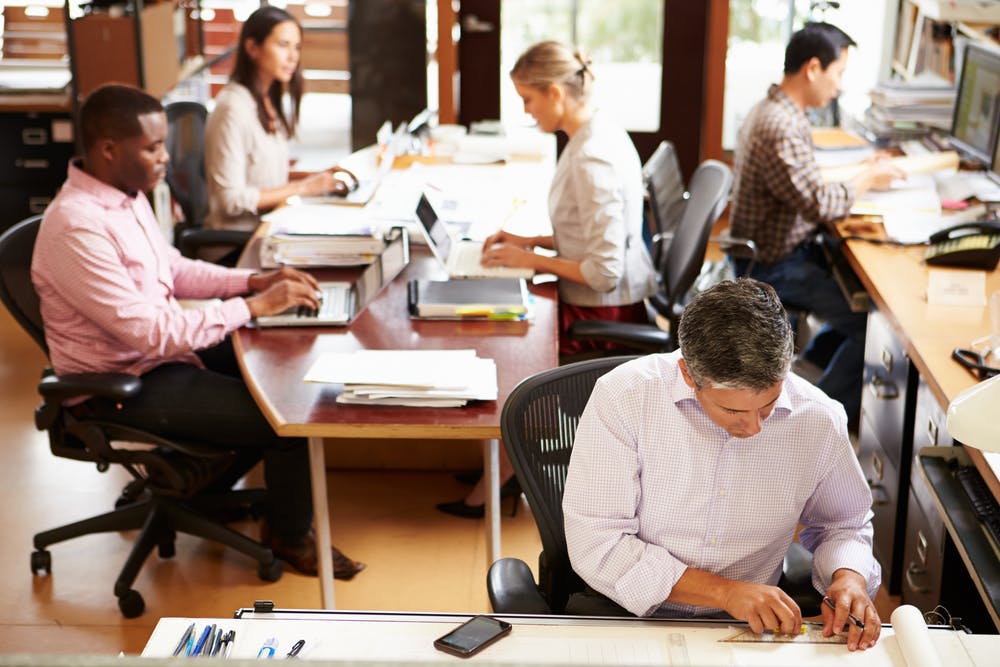We often hear that humans are the product of their genes and their environment. As working professionals, we spend most of our lives in an office or building environment. Can the buildings that we work in impact us as well?
A survey from Capital One found that 82% of office workers believ e companies need an innovative office space to encourage innovation. Studies show that building design and office environments can have various psychological effects on the way people think and behave. This comes from a new field of research called architectural psychology that explores how human beings interact with our built environment.
e companies need an innovative office space to encourage innovation. Studies show that building design and office environments can have various psychological effects on the way people think and behave. This comes from a new field of research called architectural psychology that explores how human beings interact with our built environment.
Research has revealed that our building environments can have positive and negative effects on mental health and well-being. Psychologist Dr. Colin Ellard found that participants in his survey showed the highest levels of positive mood when visiting a green space. On the other hand, multiple studies show that open office design negatively impact productivity, and nearly 90% of professionals prefer a space where they work alone.
A well-designed office environment makes it easy for people to collaborate on projects, brainstorm creative concepts, and overall have a better attitude about where they’re working.
From wall color and lighting to windows and green spaces, there are a number of elements that impact how we think and feel. A few of these design features and benefits that companies will want to incorporate include:
- Being exposed to natural light through the windows can improve sleep quality.
- Blue-painted interiors encourage creative thinking.
- Buildings designed with curved lines have been shown to reduce stress.
If you’re looking for new office space, it is important to consider the elements of a building and how it can impact you, your team, and your business. For some insight, check out this infographic exploring the benefits of building design on workers that managers and HR professionals will want to consider in their office environment.
Modern architecture has come a long way from the iconic, yet disastrous Pruitt-Igoe housing project in St. Louis. It’s hard to determine if there’s such thing as a “perfect” building, but architects and urban planners are quickly becoming aware of how their designs may impact other people. Whether you’re an architect or simply an inhabitant, there are a handful of tips to keep in mind to ensure you’re at your happiest and healthiest self in the built environment.
For starters, having direct access to nature is key to overall happiness and well-being. Not only do large windows provide views of the great outdoors, but they also allow plentiful sunshine to seep through, and natural light plays a major role in psychological comfort. Given we spend approximately 87% of our time in buildings, close proximity to urban parks and other natural environments can also provide a healthy escape from being cooped up inside the office all day. Furthermore, color and building design can go a long way in improving our performance.
